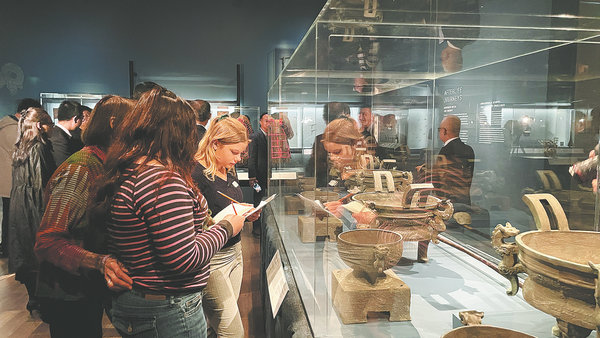

"Supported by in-depth academic research and the latest archaeological findings, it showcases the continuity, unity, peacefulness, inclusiveness, and innovativeness of Chinese civilization," said Li, who is also China's vice-minister of culture and tourism.
In November, President Xi Jinping met with President Joe Biden in San Francisco, inaugurating the future-oriented "San Francisco vision" to enhance the stable, sound and sustainable development of the China-US relationship.
Li said the show is an example of transforming that vision into reality. He called for close cooperation between museums in China and the US in future to allow both the Chinese and American people to understand and respect each other's cultures and values.
The exhibition received strong support from China's National Cultural Heritage Administration and partner museums in China, which loaned important pieces from their collections, such as the standing crane-like creature with deer antlers, and the painted drum with a pedestal design of phoenixes on tigers' back, said Jeremy Zhang, the museum's curator of Chinese art.
The show consists of five sections that vividly illustrate the achievements in art, music, technology, and design of the Zeng and Chu states, two vassals of the Zhou Dynasty (c.11th century-256 BC) in the middle reaches of the Yangtze River, a cradle of China's early civilization at the end of the Bronze Age.